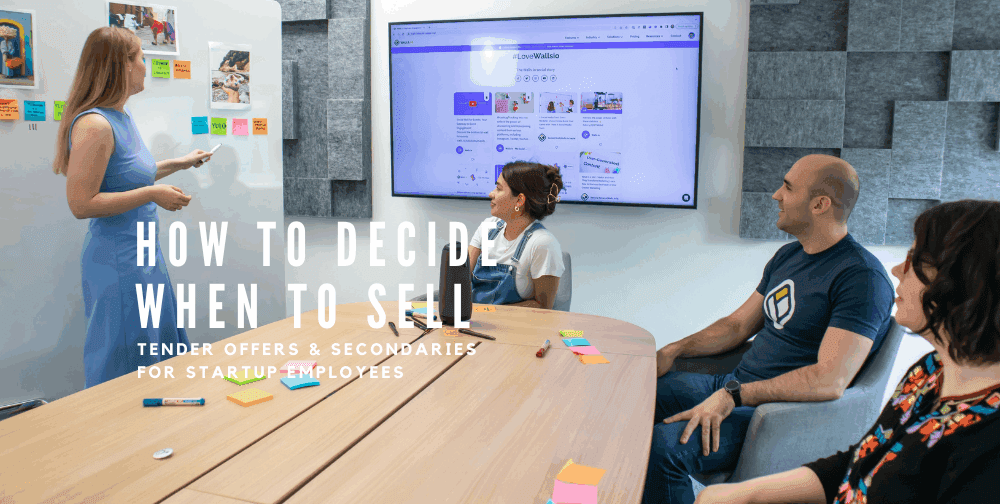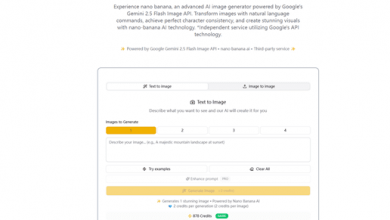Tender Offers & Secondaries for Startup Employees: How to Decide When to Sell

You finally have something most people never do: equity in a private company that outside buyers actually want. Then the email lands—“We’re running a tender offer.” A window opens to turn paper value into cash before any IPO. It sounds straightforward. It isn’t. Here’s a clear, employee-first way to choose whether to sell, hold, or split the difference.
What a tender/secondary really is (and isn’t)
A secondary is the sale of existing shares from one holder to a new buyer. A tender offer is a structured, company-coordinated secondary with a defined price, timeline, eligibility list, and caps (for example, “up to 20% of vested holdings”). It’s not a verdict on your employer’s future; companies run tenders to relieve retention pressure, tidy the cap table, or meet investor demand.
Before you touch a form, confirm what you actually own—type of grant, vesting, strike price, and whether you must exercise to participate. If you need a refresher on cliffs, schedules, and exercises, this plain-English primer on how your stock options vest will help you sanity-check your grant so you’re not making a liquidity decision on fuzzy assumptions.
You’ll also see guardrails that are more rule than preference. For instance, U.S. tender-offer practice is shaped by the Exchange Act’s Rule 14e-1; a common baseline is that an offer remains open at least 20 business days, which frames your timeline and reduces “rush” risk.
A fast decision framework: sell, hold, or split?
Treat this like a portfolio decision, not a loyalty test. Run these filters:
- Liquidity needs (next 12–24 months). If selling retires high-interest debt or funds a must-have (down payment, childcare, safety net), partial liquidity can beat paper wealth.
- Risk concentration. If 60–90% of your net worth is in your employer, selling 20–30% of vested shares reduces household risk without nuking upside.
- Milestone risk. Is the next year “binary” (regulatory approval, platform migration, make-or-break renewals)? De-risk accordingly.
- Price vs. probability. If the next financing were priced 20% lower, would you regret not selling a slice? If the next event is priced 50% higher, would you regret selling too much?
- Org culture. Most teams view modest sales as prudent; you know your company’s vibe.
- Friction. Exercise requirements, paperwork, and timing can be non-trivial—plan for the admin.
A quick gut-check that helps: imagine the tender closes tonight, and tomorrow your role vanished. Would today’s “hold it all” choice still let you breathe easy for six months? If not, your concentration is telling you something. Likewise, zoom out to opportunity cost: clearing a 19% APR balance or funding an emergency reserve is a risk-free return that beats hoping for a slightly better private mark next quarter.
Consider practical constraints, too. Blackout policies may restrict trading around financing events; some companies cap participation by tenure or performance band, and option exercises can collide with cash-flow realities. If your plan relies on friends-and-family loans to exercise, you’re taking on interpersonal risk—build a smaller, contained plan you can execute with your own cash.
Finally, align the decision with household planning. If a spouse or partner has volatile income, favor de-risking; if one of you has stable public-market savings, you can afford to hold more private exposure. Put numbers to it in line-item budgeting so “peace of mind” isn’t just a phrase—it’s a funded buffer.
To keep the discipline, borrow a public-markets habit: size your exposure and stick to it. If you want a quick orientation to tools people use to track positions, a practical comparison of trading workstations—TC2000 vs Thinkorswim—helps illustrate how everyday investors structure decisions, even if you’re dealing with private shares.
Taxes and rules that change the math
You don’t need to be a tax pro, but the basics matter:
- ISOs (Incentive Stock Options). Exercising can trigger AMT because the “bargain element” is an AMT preference item, with reporting via Form 3921. The IRS outlines the moving parts in plain language in Topic No. 427, which is a good starting point before any exercise-to-sell plan.
- NSOs (Non-qualified Stock Options). The bargain element at exercise is ordinary income; employer withholding may not fully cover what you owe.
- RSUs. Taxed as ordinary income at vest; any gain or loss after that is capital.
- Holding periods. Long-term capital gains generally require more than one year; ISOs need both one year post-exercise and two years post-grant for favorable treatment.
- Restricted shares & resales. Even in a company-approved tender, you’re handling restricted securities. The SEC’s primer on resale pathways, conditions, and legends in private secondary markets clarifies why documentation and timelines look different than those in public markets.
Headlines about giant tenders are context, not instructions. What they do show is “normal” late-stage practice: eligibility caps by tenure or role, fixed pricing windows, and allocations that can be oversubscribed. If you want a steady feed of sector news while you weigh timing, TechBullion’s rolling coverage in Fintech News is a useful dashboard.
A practical playbook you can run this week
Step 1: Inventory your position. For each grant, list type (ISO/NSO/RSU), strike, vesting, expiration, and what’s eligible in this window. If exercise is required, tally cash to exercise plus conservative tax reserves.
Step 2: Decide your slice. Skip the zero-or-all trap. Pick a middle path that funds near-term goals, reduces concentration, and preserves upside. Write your rationale so you don’t second-guess it later.
Step 3: Three-case table. Model tender price now, a downside mark (−25%), and an upside mark (+50%). Multiply each by the fraction you plan to sell (say, 30%). Compare after-tax proceeds to a hold-all baseline to gauge regret.
Step 4: Paperwork early, not late. KYC, broker details, right-of-first-refusal notices, and transfer-agent steps pile up in the last 72 hours. Calendar the deadline and submit everything with a buffer.
Step 5: Communicate lightly. You don’t owe colleagues details. If a manager’s signature is required, keep it factual and early: “I’m doing routine rebalancing.”
Step 6: Sanity-check your tools. If you’re brushing up on sizing and scenario testing, a neutral overview of analytics stacks in best options backtesting software shows how investors pressure-test decisions—even if your equity is private.
Step 7: Pressure-test with scenarios.
- Early employee with ESOs. Exercise requires cash and might trigger AMT. Sell 35% of vested shares, allocate proceeds to cover taxes, build a safety net, and exercise a measured portion for future upside.
- Senior hire with RSUs. You don’t need liquidity. Skip this window, and set rules: consider selling if the price nears your target or if the concentration exceeds half your net worth.
- Alumni with NSOs near expiration. Use a cashless exercise-and-sell to avoid losing expiring options, then keep a modest stake for later events.
Bottom line
Tenders and secondaries are tools, not verdicts. Decide like a portfolio manager: start with household risk, cash needs, and regret math; then preserve upside you’ll be proud to hold through the next milestones. A measured sale today can turn paper stress into diversified calm—design the plan, run it, and move on.

Source: Tender Offers & Secondaries for Startup Employees: How to Decide When to Sell




